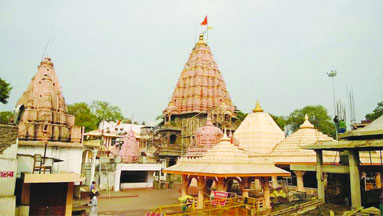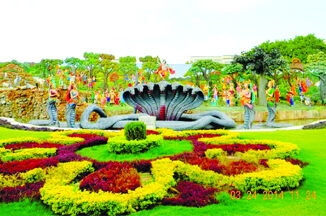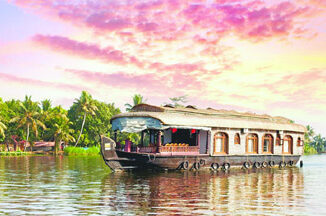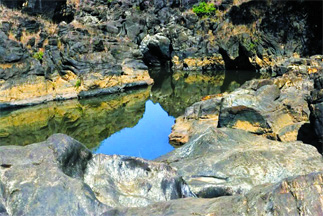
Ujjain, considered to be one of the holiest cities of India, is an ancient city situated on the eastern bank of the Shipra River in the Malwa region of Madhya Pradesh. Ujjain is one of the four sites for the Kumbh Mela, the largest peace-time gathering on the planet that attracts 100 million people to the festival.
This makes Ujjain an important place of Hindu Pilgrimage. To add to that, it is also home to the Mahakaleshwar Jyotirlinga, one of the twelve Jyotirlinga shrines to the god Shiva. Ujjain is one of the most glorious cities of ancient India as it was also known to be the educational hub of various Indian scholars.
The immense wealth of Ujjain in terms of religion, architecture, and educational value makes this is a top attraction amongst not only Indian travellers but also amongst foreign tourists as well. Ujjain is located at a distance of 52 km from Indore, which is also the nearest major airport.
Mahakaleshwar Jyotirlinga
Mahakaleshwar Temple, located in the ancient city of Ujjain in the state of Madhya Pradesh, is one of the 12 Jyotirlingas in India. Dedicated to Lord Shiva, the Mahakal lingam at this temple is believed to be Swayambhu (self-manifested), obtaining currents of Shakti (power) from within itself. Mahakaleshwar is also one of the 18 Maha Shakti Peethas in India.
Another factor that makes Mahakaleshwar one of the most revered Jyotirlingas in India is the fact that the Mahakaleshwar idol is Dakshina Mukhi, facing south, unlike all the other Jyotirlingas. Considered no less than a Hindu pilgrimage, the Bhasma-Aarti of Mahakaleshwar Temple is hugely popular amongst the devotees.
The Mahakaleshwar Temple complex is a spacious courtyard with sculptural finery and sophistication that is influenced by Maratha, Bhumija and Chalukya styles of structural design and is complete with impressive lingam sculptures of Mahakaleshwar. It also has the inscriptions of Omkaresvara and Nagachandresvara and images of Ganesha, Kartikeya and Parvati. The temple, which is spread over five levels, sees a huge throng of devotees during the Maha Shivaratri festival.
Kal Bhairava Temple
Bhairav is a fierce manifestation of Lord Shiva, and Kal Bhairava is the most important among the eight Bhairavas. If ancient scriptures are to be believed, Kal Bhairav temple is said to be related with the Tantra cult, a secret religious sect who thrived upon black magic.
There is a Shivalinga in this temple which during Mahashivratri attracts thousands of visitors to this religious site.
Ram Mandir Ghat
Ram Mandir Ghat is of immense religious significance to Hindus because it is one of the four locations where the Kumbh Mela takes place every 12 years.
It is considered to be one of the oldest bathing Ghat in connection with the Kumbh celebrations. Millions of people throng this place during the mega Kumbh festival as it is believed that a dip here can wash off all you sins. Watching the sunset from the Ram Mandir Ghat is one of the most enchanting scenes you’ll experience.
Kumbh Mela, Ujjain
The Kumbh Mela is one of the most extraordinary human gatherings on the planet. Held in India, the fair commemorates the legendary Samudra Manthan event in Hindu Mythology. The fair takes place only once in every twelve years for twelve days which are equivalent to the twelve years of the Hindu gods in the mortal world. The banks of river Ganga at Haridwar, river Godavari at Nashik, the confluence of river Ganga, Yamuna and Saraswati at Allahabad and river Kshipra at Ujjain serve as the venues for this huge carnival.
The Kumbh is held every three years in one of the four cities, Haridwar, Allahabad, Nasik and Ujjain. The last Kumbh Mela was held in Ujjain in 2016. The next Kumbh Mela will be held in Ujjain in 2028.
Kumbh Mela is a Hindu pilgrimage of faith in which Hindus and people from all over the world gather together at a place to bathe in a sacred river. From ancient times, four fairs are widely recognised as the Kumbh Melas: the Haridwar Kumbh Mela, the Allahabad Kumbh Mela, the Nashik-Trimbakeshwar Simhastha and the Ujjain Simhastha.
These four fairs are held periodically at one of the four places by rotation. The main festival site is located on the banks of the river Ganga at Haridwar, Sarasvati at Allahabad; the Godavari at Nashik; and the Shipra at Ujjain. Bathing in these rivers is believed to clean people of all sins.
The Ujjain Kumbh Mela is a pompous and colourfl event and is a treat for travellers. It is an enriching experience which immerses the attendees of the fair in the colours of spirituality and old world charm. One is never too young or too old to attend the Kumbh Mela.
A ceremonial bath in these holy rivers is considered to be the essence and most significant ritual of this festival. It is believed that a holy dip in these rivers cleanses the soul of individuals and frees them from all their sins, as the rivers turn into the areas of sanctity during the favourable time of the Kumbh Mela.
Harsiddhi Temple
The Harsiddhi Temple boasts of an idol of Annapurna painted in dark red colour between the idols of Mahasaraswati and Mahalaxmi.
This temple, was almost in an irreparable condition, until the Marathas decided to reconcile it. This is the reason why the temple has a Maratha touch to it.





Be the first to comment